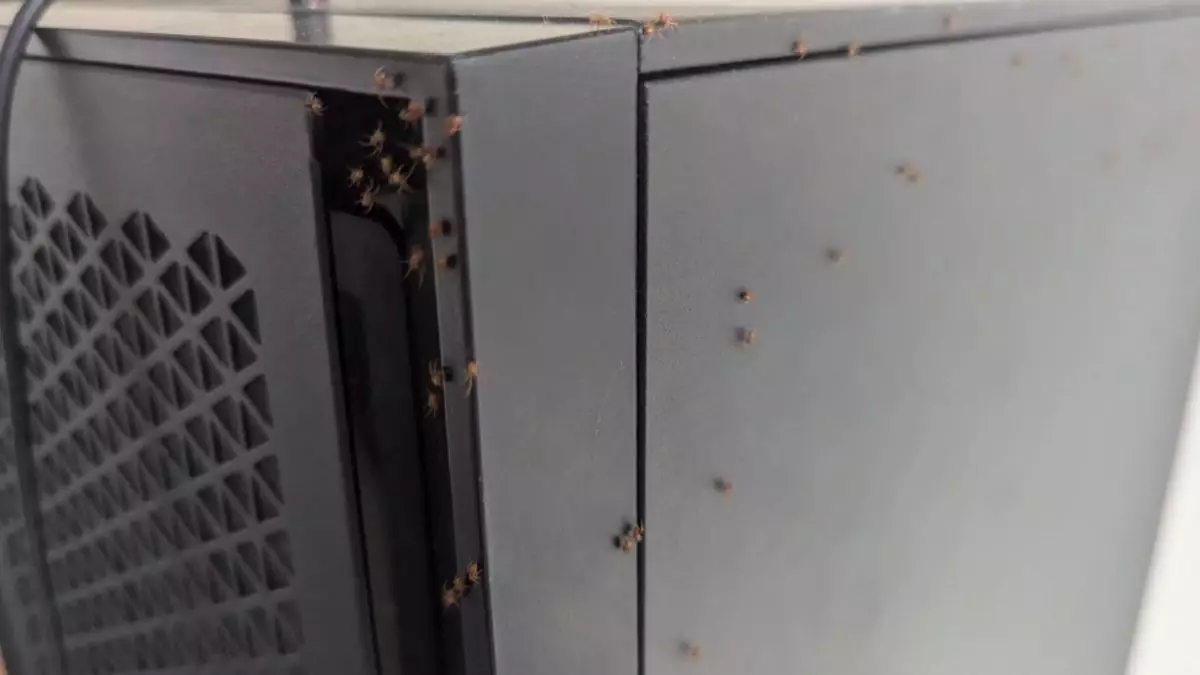For many, the sight of a spider can evoke a wave of discomfort, if not outright fear. This sentiment, shared by a multitude, becomes even more pronounced when such creatures invade our personal spaces—particularly our tech-laden sanctuaries. The juxtaposition of sleek computers and nature’s eight-legged inhabitants creates a rather alarming image, especially when those creatures take residence within the confines of our cherished devices. Recently, a Reddit user by the name of Duck_Shover exposed this unsettling truth, posting images of what appeared to be a baby spider infestation within their computer case, igniting a flood of reactions and advice from the online community.
The initial panic induced by such a sight is entirely understandable. The mere thought of tiny spiders congregating around intricate computer components sends chills down the spine of even the most composed tech enthusiast. For Duck_Shover, the moment was a revelation; they believed they were dealing with an outright infestation, picturing swarms of baby spiders emerging from every crevice of their machine. Their post—titled, “It appears there was a spider egg in my computer, any advice?”—betrayed a sense of urgency that resonated with many who empathized with their plight.
However, upon further investigation, the situation proved less dire than it first appeared. Duck_Shover discovered that the supposed egg was actually perched on the exterior of the computer, and the total number of spiders was restricted to a manageable size. Approximately 50 to 100 critters were observed, a fraction of what one might imagine from the ominous descriptions of spider eggs commonly discussed online. This revelation, while relieving, still posed an intricate problem; how does one effectively remove unwarranted guests from their technology?
In a shining example of measured reasoning, Duck_Shover tackled the infestation with a level of composure that could elude many. Instead of yielding to panic and considering extreme measures—such as burning the machine or relocating entirely—Duck_Shover opted for a practical approach. This involved disassembling the computer panels and utilizing a vacuum cleaner to efficiently remove the spiders, followed by a thorough wipe down of the surrounding areas. This step showcased their commitment not just to cleaning their technology, but also to ensuring that their living space remained free from any remnants of the invasion.
Contrastingly, the author’s initial bleak suggestion to incinerate the computer and relocate would likely not only be impractical but also unnecessarily catastrophic. This serves as a reminder of how exaggerated our responses can be when faced with unexpected, and perhaps slightly unsettling, domestic challenges. The reality is that confronting minor crises with logical solutions often yields better outcomes than succumbing to instinctive fears.
Despite the happy ending to Duck_Shover’s situation—the computer was presumably restored to its former, spider-free glory—the lingering dread of encountering a lurking spider remains palpable to those who share similar sentiments. The mental image of a monstrous mother spider, lurking in unseen corners, spawning countless offspring, keeps many vigilant long after the visible problem has been addressed. While these fears may feel irrational, they are a testament to our innate inclination to survive against perceived threats.
The tale of Duck_Shover ultimately serves as a captivating narrative, wrapping the themes of phobia, technology, and practicality into one succinct web. The reality is that such experiences can offer crucial reminders about our relationships with both nature and our modern inventions. As we continue to optimize our technological spaces, ensuring they remain agreeable spaces for productivity, it might also be wise to engage in routine checks, both for the health of our machines and to maintain our peace of mind.
The story of a computer infected with baby spiders offers much to ponder. It not only highlights the instinctive fear many associate with spiders but also the ways in which individuals can confront such challenges with resilience and reason. As we embrace technology in our lives, let us not forget the occasional need to reconcile it with the unpredictable wonders of nature.

